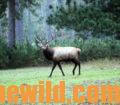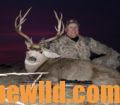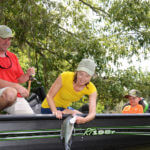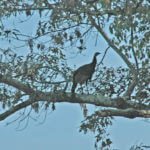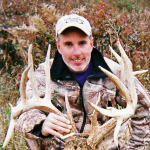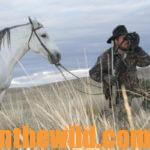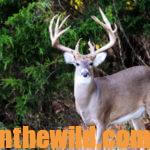Editor’s Note: J.R. Keller has lived in Colorado most of his life and has had a love for the outdoors, which he’s acquired from his father, while accompanying him on hunting and camping trips. With Keller’s vast knowledge of hunting elk, turkey, mule deer and waterfowl, he’s appeared on The Outdoor Channel, TNN Outdoors and numerous outdoor TV shows and teaches seminars across the country. Keller’s philosophy is that knowledge is the most-important piece of equipment a hunter takes into the woods.
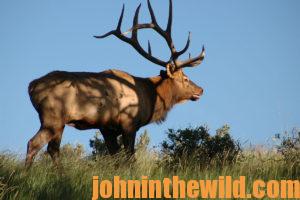 I also carry rope with my pack. Then when I’m packing-out the meat, whether I’m carrying a quartered elk or deboned meat, I have the weight evenly distributed in the pack. Although hauling meat isn’t an easy task, it doesn’t have to be miserable. You don’t want the weight in the pack to be shifting from side to side. So, make sure whether you’re carrying a quartered elk or deboned meat that you have the pack evenly distributed to carry the meat out.
I also carry rope with my pack. Then when I’m packing-out the meat, whether I’m carrying a quartered elk or deboned meat, I have the weight evenly distributed in the pack. Although hauling meat isn’t an easy task, it doesn’t have to be miserable. You don’t want the weight in the pack to be shifting from side to side. So, make sure whether you’re carrying a quartered elk or deboned meat that you have the pack evenly distributed to carry the meat out.
One of the most-cumbersome loads to get out is the elk’s head with his antlers attached. When I’m tying the head on a frame pack, I’ll put the elk’s nose up at the top of the pack. Then his antlers will hang down by my side with the tines pointed-out and away from me. This way, the antlers are less likely to hang-up on trees, limbs and brush as I’m traveling with the elk’s head. Because the head and the antlers are clumsy, spend time carefully tying the head and the antlers to the frame pack to ensure you have the weight as evenly distributed as possible. Try to get your meat out quickly after you take an elk, put it in an ice cooler and either take it to a processing plant or process it yourself.
How to Process Your Meat:
Take the backstrap from the elk, and cut it into steaks, because those cuts are the choice ones. Then, you can cut-out roasts. I have much of my elk meat ground into hamburger. I request that a small amount of pork or beef fat be added to the meat because elk meat is so lean. Most processors put about 10% of pork or beef fat in with the elk meat when they grind it.
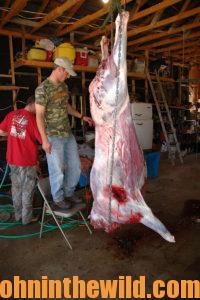 I have a friend who has a big cooler and all the equipment needed to process meat. So, my buddies and I will go over and help each other butcher our elk. We cut our steaks first and then our roasts. We use our leftover meat, like the elk’s neck, the shoulder meat and other meat to make elk hamburger. To mix-in pork or beef fat with the elk, we generally don’t use exact measuring; we measure by sight to keep the elk meat from being dry.
I have a friend who has a big cooler and all the equipment needed to process meat. So, my buddies and I will go over and help each other butcher our elk. We cut our steaks first and then our roasts. We use our leftover meat, like the elk’s neck, the shoulder meat and other meat to make elk hamburger. To mix-in pork or beef fat with the elk, we generally don’t use exact measuring; we measure by sight to keep the elk meat from being dry.
When cooking elk steaks, I prefer to marinate the steaks first in a mixture of orange juice and Italian dressing overnight in the refrigerator. Then the next afternoon, I’ll cook them on the grill. One of the problems most people have with cooking elk, venison or any wild meat is they overcook it. Wild meat tastes best when it’s cooked no more than medium rare. Since elk is so lean, you can’t cook it nearly as long as you do a beef steak that’s marbled with fat. If you cook the meat too long, it will be tough. Properly-prepared elk tastes delicious.
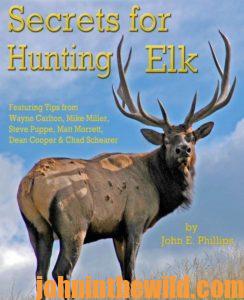 To learn more about hunting elk successfully, check out John E. Phillips’ book, “Secrets for Hunting Elk,” available in Kindle and Audible at https://www.amazon.com.
To learn more about hunting elk successfully, check out John E. Phillips’ book, “Secrets for Hunting Elk,” available in Kindle and Audible at https://www.amazon.com.
You may have to copy and paste this click into your browser. (When you click on this book, notice on the left where Amazon allows you to read 10% of the book for free).

